#tech class playtest
Explore tagged Tumblr posts
Text
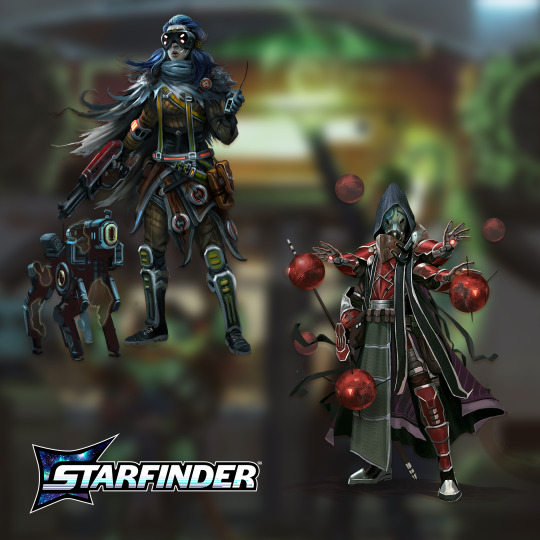
The new Starfinder Playtest starts today! Read today’s blog and try out the reworked Technomancer and Mechanic for yourselves!
19 notes
·
View notes
Text
OUR NEW DEMO IS TIGHTER. LOUDER. FASTER. DEADLIER. FUNKIER.
Reach for the skies, Omens. The newest version of our anarchist's playbook is here with more teeth than you can swing your boot at. Our airwaves have been heavy with calls and prayers, begging us to drop the new funk that is TITANOMACHY: Dreams of the Hue DEMO 2000. Lo and behold, we answer prayers here.
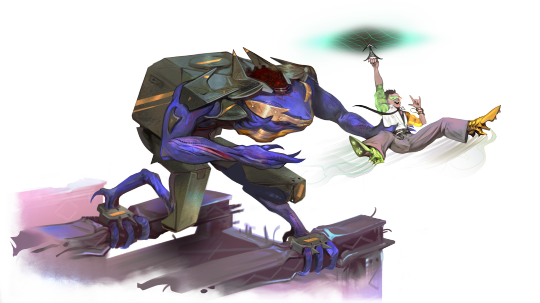
Our newest version has been augmented with the latest in TTRPG Tech prime for playing. We've got: - New Art! - System Updates! - New Layout! - New and different aspects! (check your local Omens for changes) - Typo Fixes! (we heard you) - A Brand New Past: The Retired Gridiron Player. A cybernetically augmented master of the most dangerous and beloved sport in The Hue. Link your mind with fellow players and rocket the pigskin into enemy fire. - A Brand New Hustle: The Witch Propagandist. A corporate-sponsored folk priest who taps into the last technology of the Old Old World to work borderline-impossible "magic". Commune with ancient satellites and drain adversaries of their precious lifeblood. - A Brand New Specialty: The Ostrakon. A mover in dreams, pruning the sleeping world of its poisons. Reanimate fresh corpses for your bidding and plant secrets in sleeping minds. - And Some Secret Waking Codes ;)
And what is a game without a fresh soundtrack. Beats to bash fash heads in to are all that have been missing thus far and we aim to remedy. Peep the new sonic heat, the DnB harbinger of an album full of flavor by the incomparable Button Maker. Drop into our Dream_Sequence with more on the way.
Whether this is your first drop into the Hue or your final Strike, there is no better time to break ankles than now. Check out our new and improved DEMO 2000 version of TITANOMACHY: Dreams of the Hue! Join our Discord for exclusive classes and playtests!
#biopunk#cyberpunk#indie ttrpg#playtesting#queer ttrpg#tabletop games#tabletop roleplaying#tabletop rpg#ttrpg#ttrpg community#dnb#jungle#electronic music#breakbeat#Wake up Omen#button maker#update#announcement#jackrabbit#SoundCloud
13 notes
·
View notes
Text
I kinda joked about this a few weeks ago, but the more I think about it, the more convinced I become that the Bad Kids are Pathfinder 2e characters trapped in a Dungeons & Dragons 5e world.
Gonna start with Riz here because he's the one who put the idea in my head in the first place. Riz Gukgak and his parents are clearly closer in concept and design to the green, sneaky, tech-and-fire loving Pathfinder Goblins than they are the yellow, burly mobs of the official D&D goblins. (This is probably because most of the art you find when you google "Dungeons & Dragons goblins" is actually of Pathfinder goblins.) Riz also uses guns, weapons which are uncommon but well-established in Pathfinder, but barely exist at all in D&D.
Most importantly, Riz is fundamentally an Investigator, which exists as its own class in Pathfinder but not in D&D. You know what other classes D&D doesn't have? Oracle and Swashbuckler. The former of which is mechanically way closer to the way Brennan already plays Adaine's oracle powers narratively (and has its own built-in narrative hook to play with, a curse), while the latter has entire fighting styles built around dance and makes you a more effective fighter the more you show off.
For Gorgug you have to dig a little into the gritty details, because Barbarian is a class shared by both systems, but the big one is that unlike D&D, Pathfinder has actual technology rules. Non-magical technology rules, so taking on the Artificer equivalent, the Inventor, as an archetype wouldn't have had that particular synergy problem. There's also a feat, Adopted Ancestry, that would give him mechanical access to culture-based gnome feats to reflect his upbringing with his adopted parents.
Similarly, with Fig, Bards exist in both games (Warlocks don't, but multiclassing into Hexblade is mechanically similar to taking the Magus archetype) but you know what doesn't, RAW? Tieflings that are also elves, because of how D&D's races work. In Pathfinder, however, the tiefling equivalent (nephilim, specifically hellspawn) are a versatile heritage, a secondary template that can be applied to any ancestry, so "elf hellspawn nephilim" is legal RAW. And it's something where you can choose how much of that heritage is expressed in your character's appearance so, again, the mechanics line up better with the narrative re: it only being something she learned about later in life.
Finally, you've got Kristen, who is, on paper, the one who fits comfortably in either game -- a human cleric. But I will attest that, given what she's capable of, she's not just a human cleric. Given the shit Kristen has pulled off over the last three seasons, I maintain that she would be best represented by, at bare minimum, taking the archetype for the upcoming Exemplar class (playtested last year and releasing officially in War of the Immortals, Oct 2024), the only rare class in Pathfinder 2e because they're meant to be literal, actual demi-gods, legendary heroes on the same level as Hercules, Gilgamesh, Cú Chulainn and Maui. It's a class designed to essentially break the game in select ways to make the players feel awesome (hence why it's rare, so GMs can restrict access if they choose), and well. Tell me that doesn't sound like Kristen Applebees.
So yeah, there's the rational behind my crack theory that makes way too much sense: the Bad Kids are Pathfinder characters. Or growing up to be Pathfinder characters. Something like that.
#dimension 20#fantasy high#pathfinder 2e#dungeons & dragons#also I'm pretty sure p2e's adjusted crit success/failure mechanics would do wonders for poor Brennan's stress levels#that part of the system is just objectively better and more satisfying for both players and GMs in PF2e#sorry not sorry#meta#rambling into the void
23 notes
·
View notes
Text
The classes for Stampede Wasteland are basically in their final form (barring any edits or playtest changes), so as a Fun Treat, I'm gonna share the entirety of one of them (and some "director's commentary"). But you all get to pick which one.
The rest you'll just have to wait for the final text to be released!
#ttrpg#indie ttrpg#ttrpg design#stampede wasteland#im still gonna be showing off various bits and bobs of in-progress stuff so dont worry
55 notes
·
View notes
Text
Coven Devlog #1
With Clutch's skeleton done and being playtesting, I've decided to move onto another project. Coven is a ttrpg based around playing a Witch. Which involves the players going around solving mysteries with their coven and studying magic, mainly in the form of rituals.
The main magic system of the game is based around preparation and casting rituals.
It'll probably have a dice pool system, not sure which dice to use though. This system is still in the idea phase as of the moment. May use the Blades in the Dark dice system or Modiphius' 2d20 system.
Unlike Clutch this does have a class system, which involves not so much what kind of magic a character does, but how they do magic and where it comes from. These are called Callings.
Callings
Blood Mages: Witches that use blood (Typically their own, but sometimes someone else's) to fuel their rituals. Gaining magic through the power of life itself.
Celestials: Witches that use the sun, moon, and stars to channel their magic.
Chthonics: The typical necromancer. They use the power of death and ghosts to fuel their magic.
Druids: Witches that use the power of plants, the Earth, and Animals into their magic.
Gnostics: Divine Witches that use the shard of divinity inside them to fuel their magic. They believe that because humans were made in the image of God, that every person has the ability to channel the same ability with rituals.
Tech Wizards: Coders and engineers that use computers and mechanics to do their "rituals."
Warlocks: Summoners that use the power of otherworldly beings to fuel their magic.
Each of the callings will have completely unique mechanics on how they use rituals. For instance a warlock may summon a demon to gain information on a place they want to sneak into, while a tech wizard would write a code that summons a rogue AI that may offer the same information.
Or celestial will channel the power of the full moon to enhance a weapon a druid would channel the powers of a hurricane into the same weapon.
(A lot of this will be taking from Mummy the Resurrection of all places)
5 notes
·
View notes
Text
kickstarter
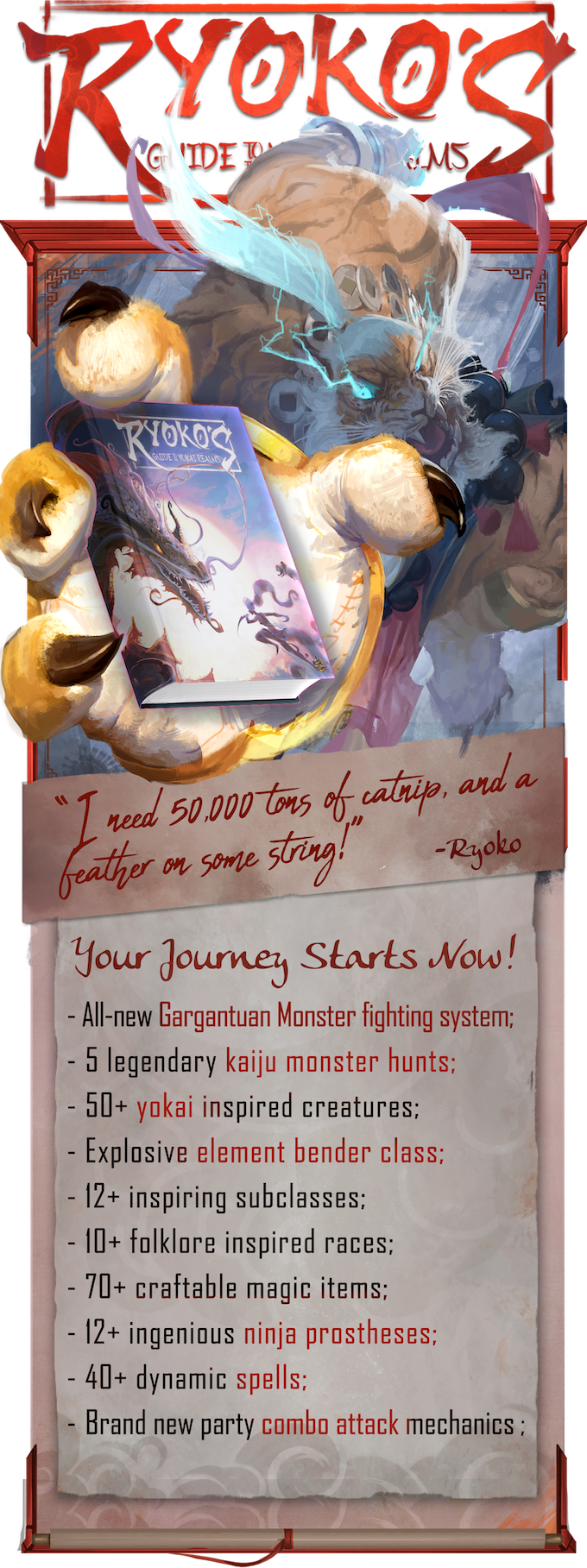
Ryoko’s Guide is a 350+ page book bursting with incredible kaiju, inspirational player options, and game-enhancing mechanics that revolutionise Gargantuan scale combat in D&D 5e. Stories and folktales of yokai paint a vibrant, dangerous world, giving GM’s the power to breathe life into any setting. Inspired by ancient mythology through to contemporary popular culture, enhance your game and expand the 5e system with Ryoko's Guide!
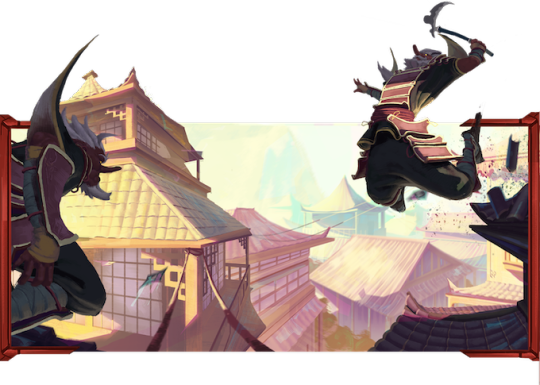
Kaiju Battles
Conjure stratospheric levels of excitement and panic as players scale, leap, and desperately battle rampaging kaiju. Totally transform combat with a rules expansion to 5e, as adventurers exploit unique vulnerabilities, adapt to chaotic, changing behaviours, and utilise ingenious ninja prosthetics to overcome unbelievable odds.
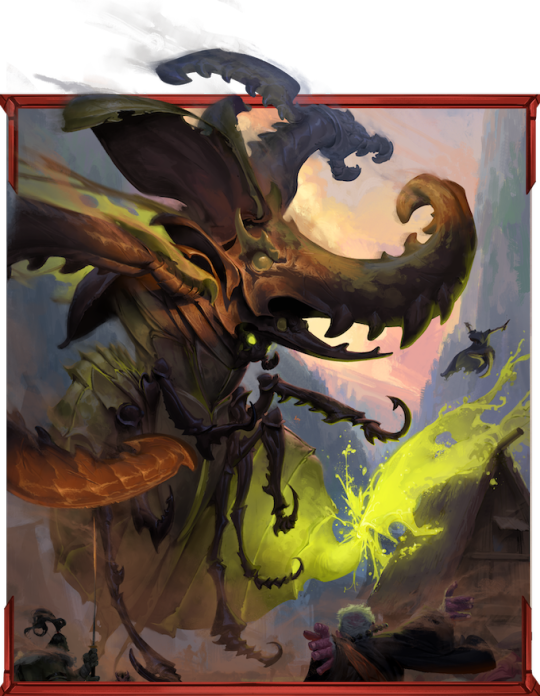
New Class: Element Bender
Harness elemental forces! Wield pillars of flame, redirect torrents of icy water, and surf on a storm of rising winds.
The bender class allows you to mix and match elements as you progress in levels. You can specialise in one element or dip into them all to become a master of earth, water, fire, and air!
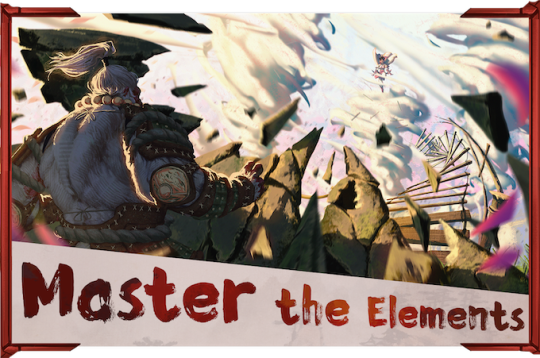
New Spells! Master over 40 new spells! Enhance your abilities with the full versatility and power of raw, primordial magic.
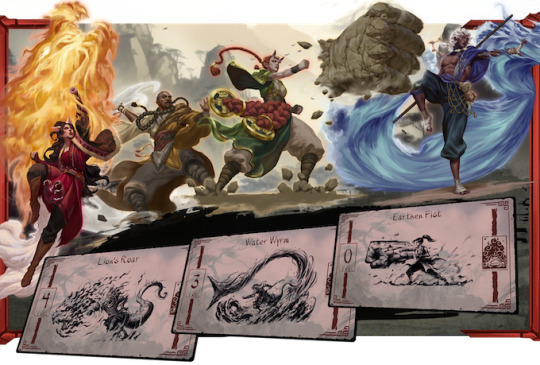
Immersive Subclasses
Become a master of shadows, stealth, and silent warfare as a shinobi wizard, a living weapon as bones burst from your flesh as the skeletal blade fighter, and Wild Shape into mysterious, spellcasting creatures as the circle of yokai druid. Or embrace any of the other 12+ subclass options for established 5e classes…

Vibrant, Playable Races
Invoke your yokai ancestry, combining blade with spell as a hanataka-tengu. Skip across lakes and oceans as a blossoming fuyo-ren, or channel the colossal strength and frigid resilience of mountains as a hulking, ape enkoh. Become one with the yokai realms as any one of 10+ races (14 subraces total!).
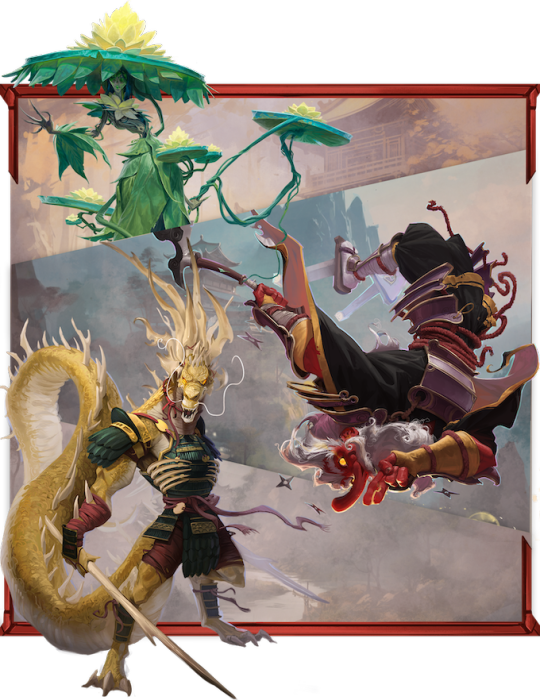
These lore-rich race options allow the creation of NPCs and player characters that seamlessly blend into any setting.
Dynamic Combo Attacks
How does the world’s biggest collaborative TTRPG not have combo attack mechanics?
Act simultaneously with the rest of your party to unleash devastating combo strikes! Hurl allies through the air, enhance their weapons with bursts of magic, bolster an ally with a defensive charge, and shift the tide of battle as your sword falls in a dazzling strike of flame and steel.
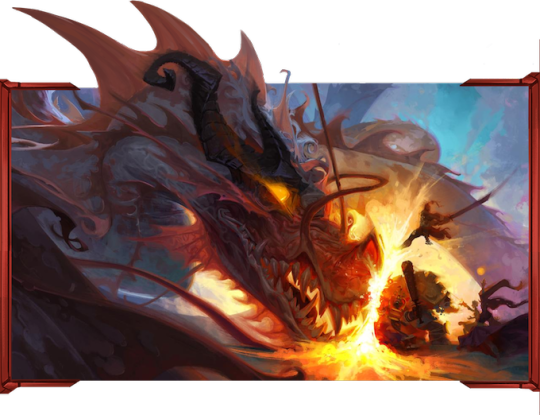
A Full Bestiary of Mighty Yokai
Surprise your players with unfamiliar creatures, where every stat block tells a story, and danger lurks behind every corner...
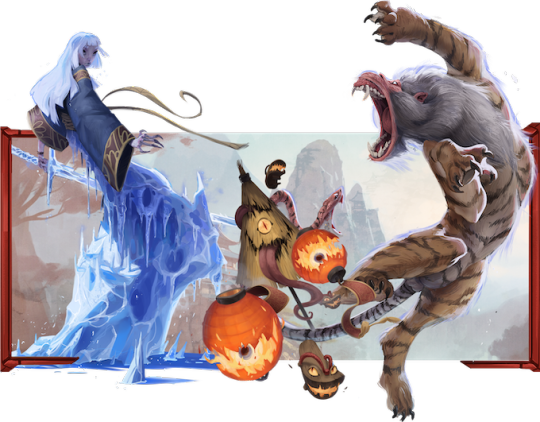
Populate your landscape with the magic of tricksy and dangerous yokai, with incredible twists and original mechanics in every stat block. With more than 50 creatures, this book is a bestiary unto itself!
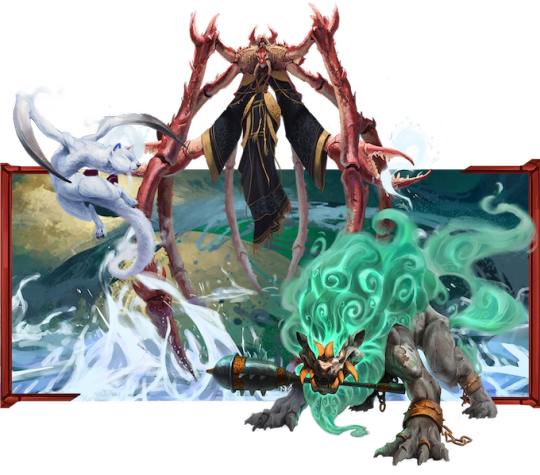
A Menagerie of Cute Familiars
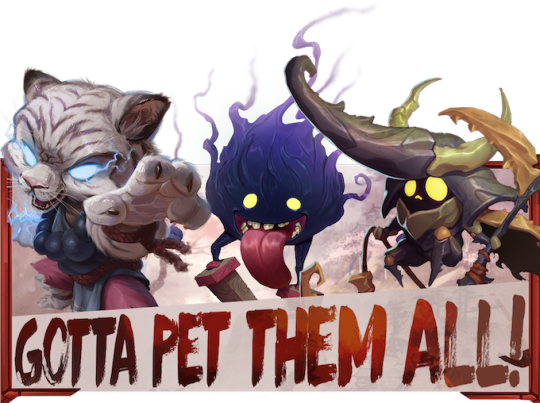
What’s better than defeating a kaiju? Biomancing its blood into an adorable yokai companion that follows you around! Even better, each of the 10 new bespoke familiars comes with a unique tech tree compatible with the Tamer class (first introduced in Heliana’s Guide). Choose your upgrades and craft your ultimate companion to become the very best that no-one ever was.
A Hoard of Magic Items & Prostheses
Unlock your imagination with over 80 new pieces of incredible adventuring equipment, magic items, and Sekiro-inspired prostheses. Swing, grapple, and launch yourself through the air with a plethora of exciting new gear to expand your combat proficiency.

Harvest and craft using a versatile and deep crafting system first introduced in Heliana's Guide. Transform the remains of defeated kaiju into a vibrant arsenal of magic items, or craft their soul into a living companion.
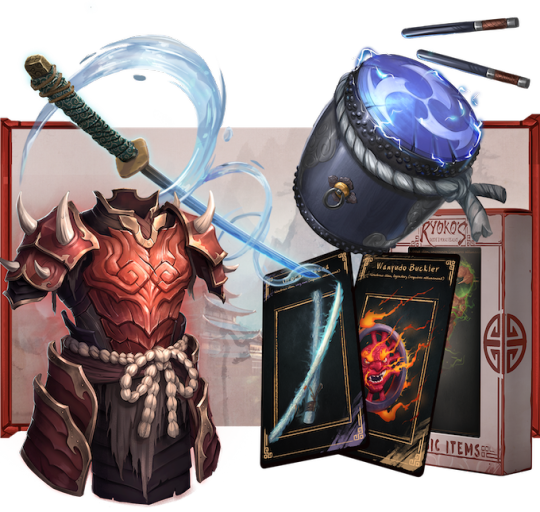
Free Playtest Materials!
Dive into the yokai realms early! Explore pre-released player materials or take on a kaiju in the epic adventure: The Ascendant Cascade.
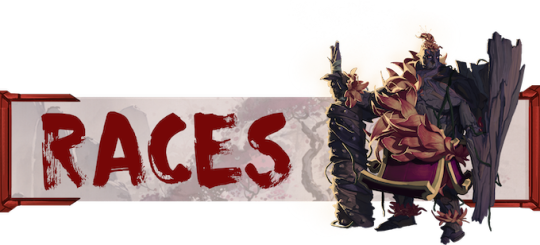
Playtest the Tengu and Atatsu races here!
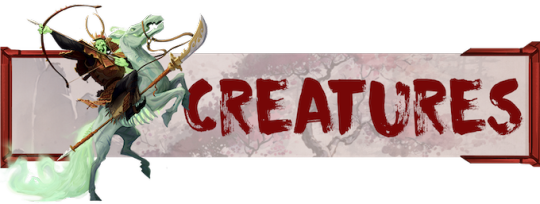
Playtest the Dodomeki and the Onryo here!
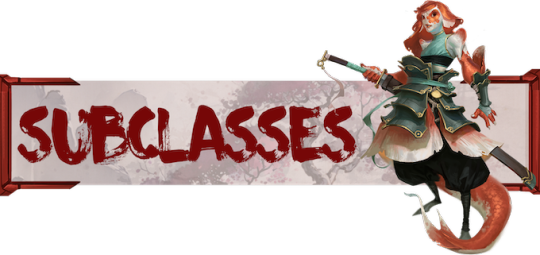
Playtest the Ronin Ranger and the Spirit Caller Sorcerer here!
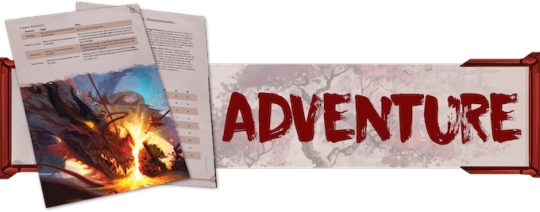
Playtest The Ascendant Cascade Kaiju adventure here!
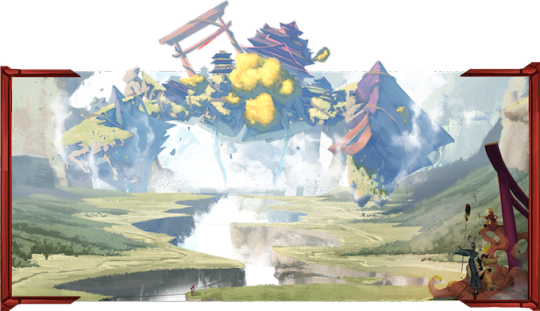
Kickstarter campaign ends: Thu, October 12 2023 3:59 PM BST
Website: https://linktr.ee/dnd_shorts
29 notes
·
View notes
Text
Starfinder 2e Playtest
Okay, I found a humble bundle literally on its last couple of hours, and bought the Starfinder 2e Playtest Rulebook.
I haven’t heard too much about Starfinder’s second edition, but from what I’ve gathered, it’s aimed to bring the mechanical side of Starfinder closer to Pathfinder 2e. Possibly even to make the two games compatible with each other, so you can bring elements of one into the other. Which … Mixed feelings? Starfinder has a very different vibe and power level, I think, so not sure how that’s going to gel. And from what I’ve read of the book so far, it is very much Starfinder running on a Pathfinder 2e chassis. Which, okay.
The playtest rulebook feels like its written primarily for people coming to Starfinder from PF2e, though, instead of people coming from Starfinder 1e, which felt a little odd to me.
As an example of this, the skills chapter talks about what you can use the Pathfinder skills for in a science fantasy setting, and says that Starfinder introduces the two new skills of Computers and Piloting, but doesn’t at all mention how someone coming from Starfinder 1e’s skills can interpret them. Life science and physical science are now apparently lores, for example, both bluff and disguise come under deception, etc. That’s not stated, though, you’re just given the list of skills and have to figure out what’s where. Which, you could figure it out, but the book is clearly written using Pathfinder expectations as the base, not Starfinder ones?
This really feels like it’s updating Pathfinder to the Starfinder setting, not updating Starfinder to the Pathfinder system, if you follow me? And I’m not sure how I feel about it.
That said. A couple other semi-random thoughts.
The ancestries were always going to be one of the wonky conversions. Starfinder 1e has an absolutely fantastic and lengthy list of playable ancestries, because they’re like D&D 5e’s races, in that they’re a one-and-done deal. You get your basic set of traits and you’re off. To convert that to PF2e’s style ancestries, with their feats as you level, mean that it’s a lot more work to write Starfinder 2e ancestries, and there’s a bit of me that’s afraid that means there’s going to be a lot less of them. Your choice of cool aliens to play is going to be a lot more limited. (Please, I want Sarcesians, they’re my favourites!)
That said. Some of the feats are really cool? This book has 12 ancestries, and two of my favourites, the ysoki and the borai, are in there, but the one that caught my eye was the barathu, which didn’t really catch my interest in 1e, but 2e takes their ‘bag of self-programmable gas and biological goo’ thing, their ability to tailor their own evolution in real time, and turns it into some really cool and fun feats. My favourite pair are Vent Gas (lvl 5) and Corrosive Venting (lvl 13), because barathus are flying sacks of gas, and you can make like a squid and vent a bunch of it at once to give yourself cover and propel yourself away, and then level that up to vent acidic gas later on. Which is, *chef’s kiss*, absolutely do want.
I’m definitely not so hot on the backgrounds. I do miss themes, which was where 1e gave you your ‘feats as you level’, tailored to what you do more than what you are. PF2e style backgrounds a little bit boring by comparison.
The classes I don’t have as much of an opinion on, as I’d have to play them to see what they feel like.
The skills … Skills are definitely tripping me up some. I did kind of like 1e’s system where you got a number of ranks to distribute per level and you levelled up your skills manually. Pathfinder’s trained-expert-master-legendary is a weird mental conversion. I am enjoying some of the Starfinder-specific PF2e-style skill feats, though. Like ‘Percussive Maintenance’ if you’re expert in crafting, which is exactly what it sounds like (hit a glitchy tech item to make it un-glitch itself).
I don’t really have a conclusion here. I’ve only just gotten the book, this was just the first idle browse. Definitely mixed feelings so far. It is weirding me out a bit that it’s so firmly based in Pathfinder rather than Starfinder in terms of expectations and explanations, I will say that. This is supposed to be Starfinder 2e, not Pathfinder 2e: Starfinder expansion. Or, well. Maybe I’m wrong about that? But it does more work to give Pathfinder players a cool new setting than it does to give Starfinder players some cool new mechanics. Pathfinder is the more popular system, so they probably do have reason to think that more people will have it as a baseline, but it does feel … a little rough towards the Starfinder player base? The skills tripped me up a lot, and I did have PF2e as my introduction to Paizo. But I liked the Starfinder skill system, so it’s tripping me up to adjust expectations in the Starfinder setting to PF mechanics.
But, you know. I’m willing to roll with it and see. Just. I would really like 2e Sarcesians? Also more mystic connections. I’m sure all that will build through the cycle, this is just playtest material.
If they’re taking feedback on the writing, definitely I’d say build some more Starfinder 1e expectations into how you’re explaining things? Like, I can figure out that engineering has been folding into crafting, and the social skills have all been rearranged, but some textual nod to that conversion might be nice, you know?
Anyhow! Carry on!
5 notes
·
View notes
Text
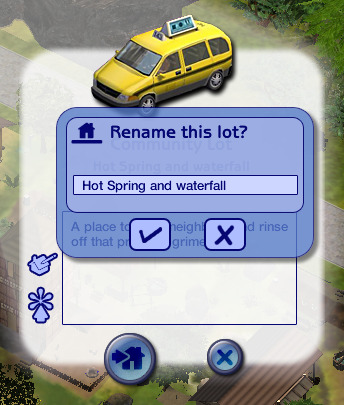
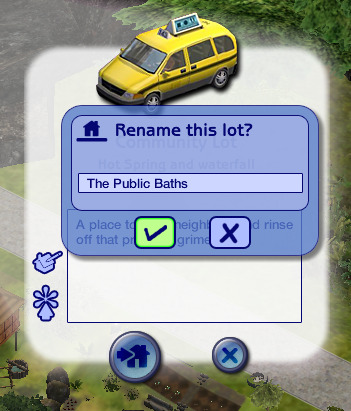
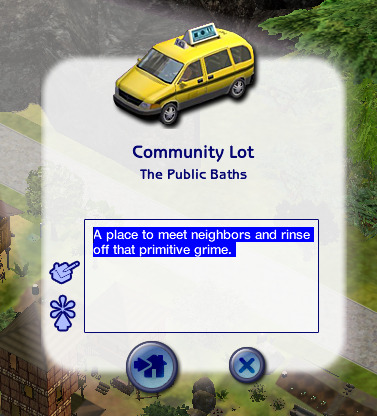
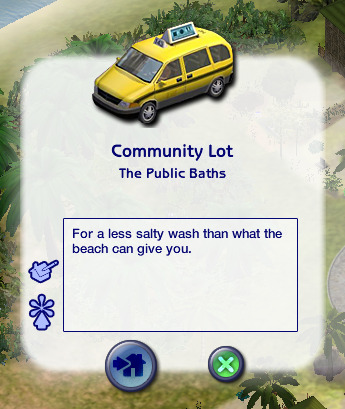
As per Rules, the Bath Lot is to be rebuilt into the Public Baths. I wanted to get this done early so I'd have somewhere to wash the smelly lower class (who are not allowed tubs in this challenge stage)
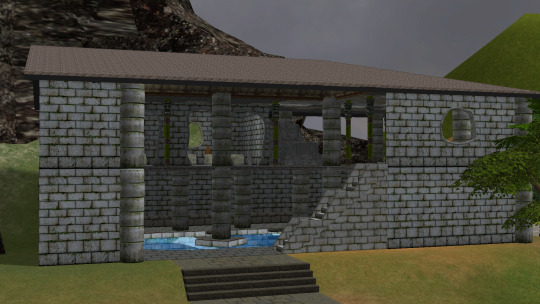
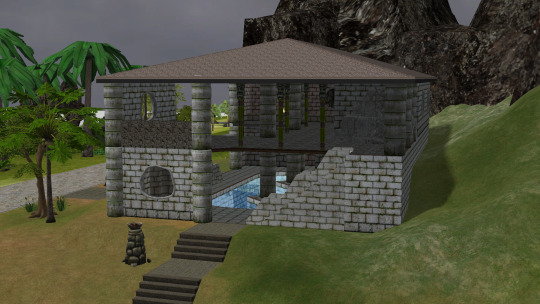
Here's how it's looking rn.. the upstairs has some small rooms with tubs for a little more privacy, and thanks to newfound Roman era advances in water tech, a hot tub. Below is a pool and 2 toilets.
You'll see more of this as we start actually playing again, but of course I had to playtest the thing, and Orotika wasted no time in making trouble
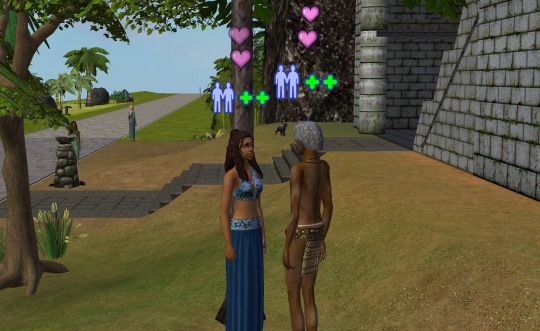
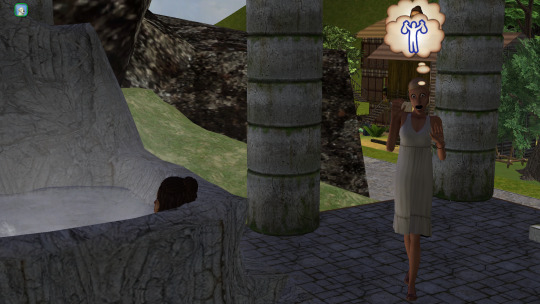
She also hot tubs nekkid. Her recently hired at-home help Miretsi is shook.
#sims 2#test of time challenge#roman stage#just setting things up#orotika keji#oorun akoko#miretsi bigarrena
4 notes
·
View notes
Text
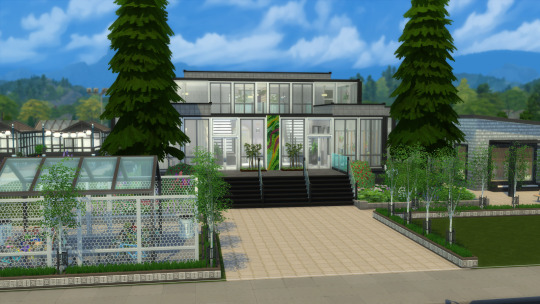
Welcome to my first build featured on Sim River Construction - Peacelands Academy! It hasn't been playtested yet, but should be fully accessible and usable. It is up on the Gallery, and is listed as a Generic Modded lot, as I did use one CC wallpaper.
Peacelands Academy was built on the High School lot in Copperdale with the intention of being a playable high school for those using High School Years in its standard form (so, only two classrooms for ease of playability during an active school day), with room for 6 students in one class, and up to 8 in the other).
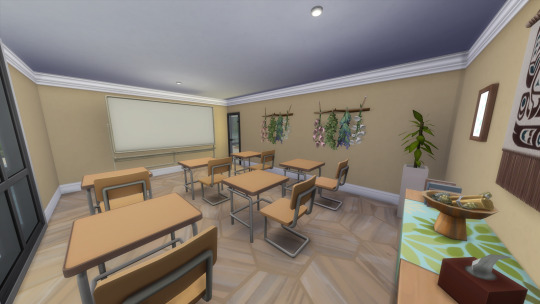
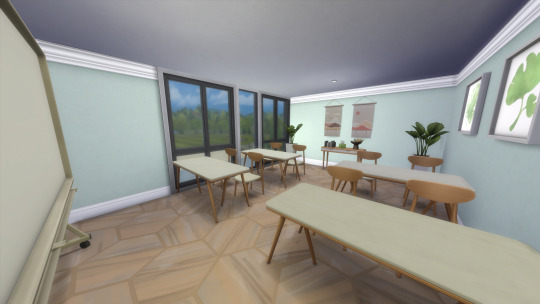
Students at Peacelands are placed in one of two cohorts - Cedar Class or Sage Class. The cohorts have been named after traditional medicines, and Peacelands enjoys a collaborative relationship with local First Nations to teach about the land, its history and its importance.
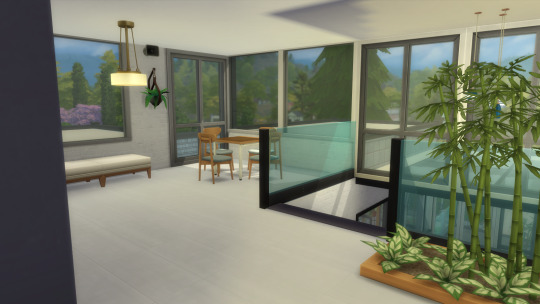
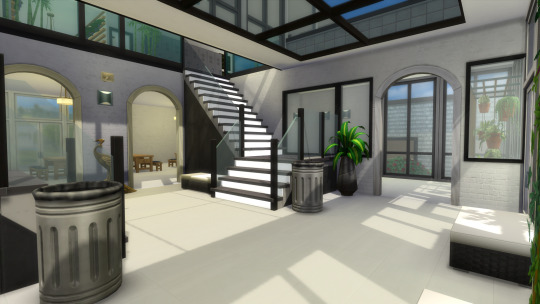
The common areas of the school were given a black and white, modern style design, but the faculty and students have offset those with lots of greenery and natural light. Anywhere the students are expected to spend a lot of time has been warmed through use of mostly natural tones. From the main floor entry hall, students can go straight through to the cafeteria and club rooms, or downstairs to the exercise centre, upstairs to class, or over into the administrative offices.
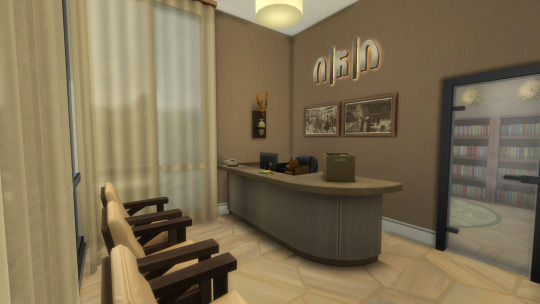
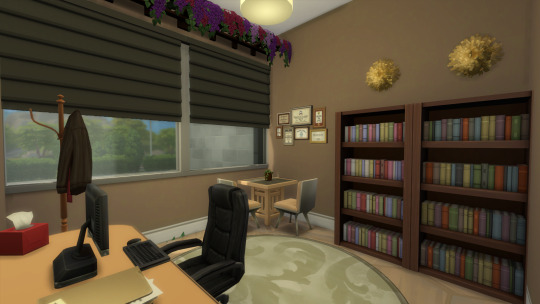
The Peacelands Administration Office has two rooms: one for the clerk who handles the registrations, deliveries and coordinates schedules. Beyond the main office is the principal's private office. Here, they can work on reports, hold small meetings and keep an eye on students through not only the exterior windows, but also through the interior window looking out into the entry hall.
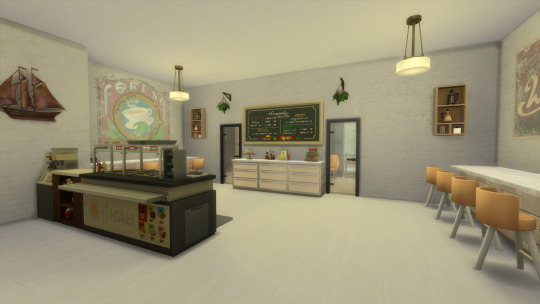

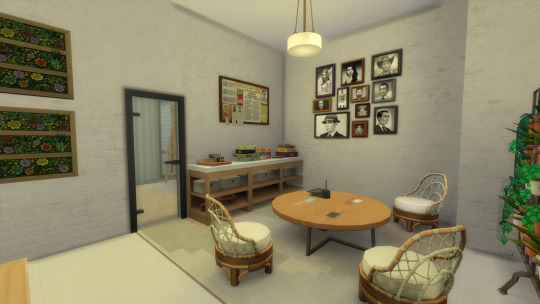
The cafeteria is the main gathering space for students while not in classes. With a full service cafeteria bar, plenty of varied seating options, and access to vending machines, students can pass their lunch hours here easily. Toilets and club rooms are also accessible from here.
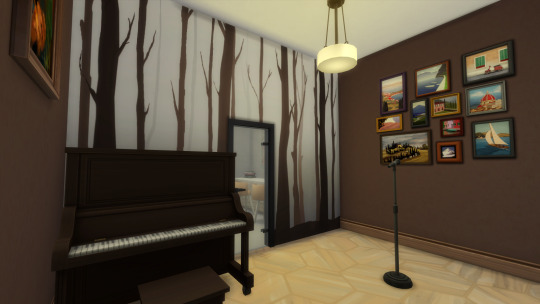
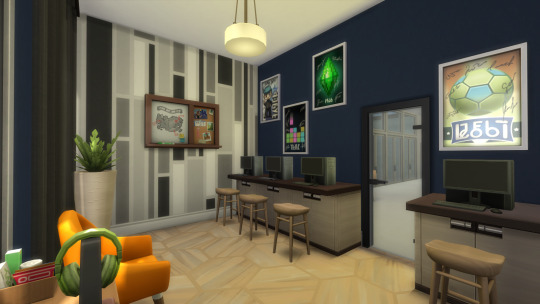


Peacelands Academy has four "club rooms": Music, Computer, Library and Art. Each room has space for a few sims to gather and work on skill-building in the creative and tech areas.
The music room features an accent wall with CC wallpaper from AJ Nebula's Even Mistier Forest collection, available on CurseForge.
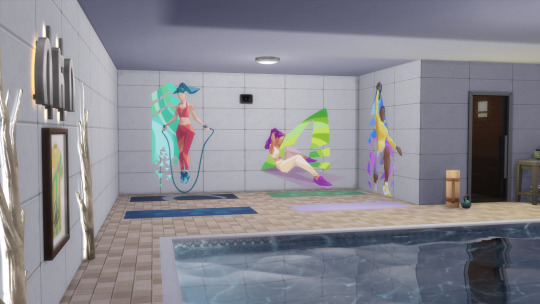
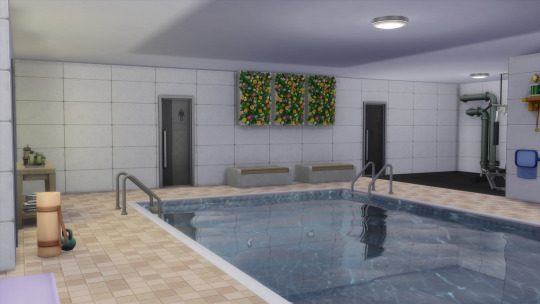
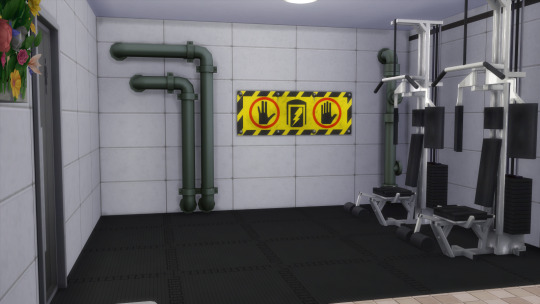

The Exercise Centre has everything students would need to build their Fitness and Wellness skills. There are two gender-segregated change rooms with showers available here. For those who want all-gender access to the change rooms, it's a simple matter of changing the doors from the Male/Female options in Build Mode to the Gender-Neutral option.

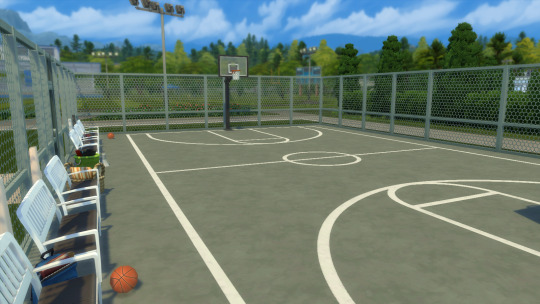

Now onto the outdoor areas!
Peacelands Academy encourages their students to use sustainable, eco-friendly forms of transportation wherever possible to get to school, and so they've built a secure area for students to store bikes and other transport forms. (My story brain says they're skateboards, but realistically, guys, it's the ski and snowboard rack from Snowy Escape. Do with that what you will, LOL.)
Behind the school is a large patio for students who want to take in some fresh air - it's sparsely furnished, but has several picnic tables for eating, as well as a partly shaded seating area. The patio leads off to the three main outdoor spaces for Peacelands, including the outdoor basketball court.
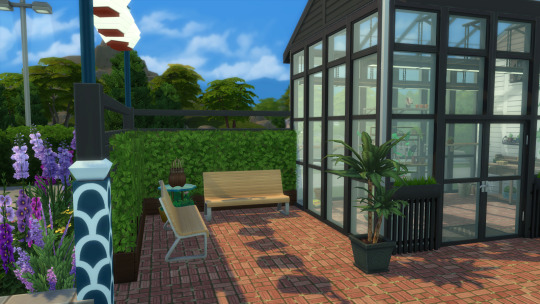

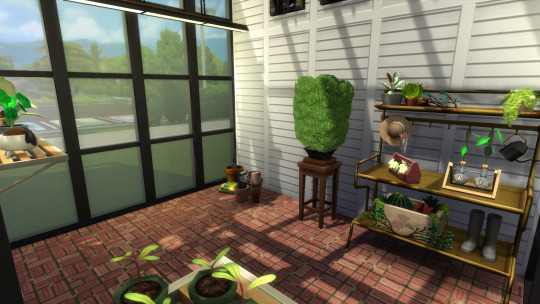
Peacelands Academy boasts not one, but THREE greenhouse areas gathered in the back corner of the lot. One greenhouse is purely decorative, while another has a bonsai tree and the third has a flower arranging table. Students can work on building their Flower Arranging skills here.
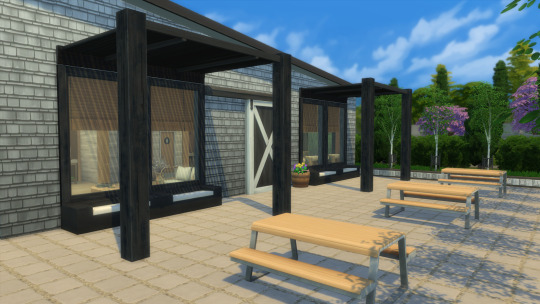
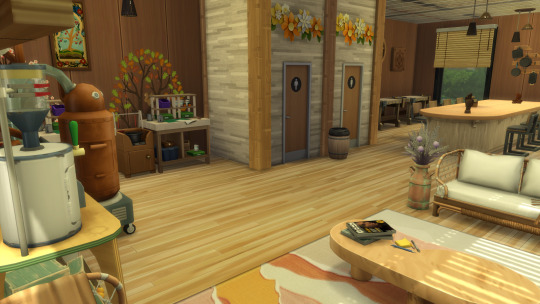
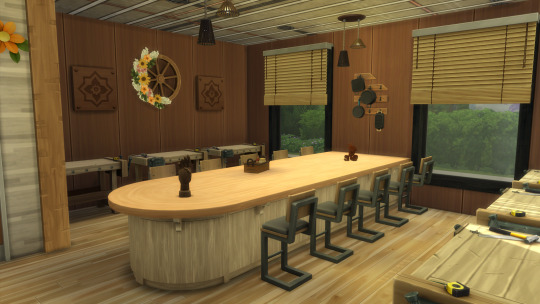
The Shed is Peacelands' newest outbuilding. Here, students can work on building their Handiness and Fabrication skills through woodworking stations, candle making stations and a fizzing station. Toilets are available here as well. The Shed also has some outdoor seating for students to enjoy the sun on great weather days!
Thanks for coming along on my first Simblr post! If you're interested in using Peacelands in your own game, it's available on the Gallery, under Peacelands Academy (ID is ForeverCamp). I have some other builds available on my Gallery from earlier years as well.
4 notes
·
View notes
Text
This is an epic, multi-layered cross-media event module with campaign-level depth, tailored to integrate with both tabletop RPGs and video games like World of Warcraft. Here's a structured breakdown to help with publishing, game dev, pitching, or playtesting:
1. Campaign Framework
Title: Galactic War – The Infinite Awakenings
An interdimensional, reality-fractured RPG setting driven by chaos, moral ambiguity, and the influence of the deity-like entity Taz.
Core Themes:
Time and reality distortion
Undead plague apocalypse
Divine vs. chaotic forces
Player agency and moral corruption
Crossover between systems and universes
2. Setting Breakdown
The Shattered Nexus:
A collapsed central timeline where everything bleeds into everything.
Host to paradox storms, corrupted NPCs, floating terrain shards.
Each turn, reality may shift: stats scramble, maps change, gravity flips.
Key Factions:
MindFlare Armada – Psionic tyrants seeking dominion via thought.
Divine Armada – Enforcers of cosmic law, trying to reseal the timeline.
The Swine Horde – Corrupted creations of Taz, spreading the Undead Plague.
Fractured Kael – Rogue time-clone seeking to overwrite existence.
3. System Mechanics
Reality Surge (Core Event Mechanic):
At the start of every round, each player rolls a d100 to determine stability. Effects include:
Power surges
Timeline swaps (alternate class versions)
Random encounters or paradox spawns
NPCs appearing with future or past knowledge
Faction Interaction Trees:
Choices ripple across timelines. Choosing to ally or betray factions affects:
Access to tech/gear
Reality stability
Endgame outcomes
4. Character Creation
Each character pulls from hybrid mechanics:
Voidwalker Mystic – Psionics + dimension phasing
Swine Corsair Juggernaut – Tech-consuming brute + necro-mutant hybrid
Celestial Warden – Divine light construct + AoE control + temporal cleansing
Entropy Duelist – Rogue + Reality distorter + Self-splitting anomaly
5. Multi-System Support
Dungeons & Dragons:
Swine Race: High Constitution, chaos-aligned, necrotic synergy, charisma penalties.
New Class Paths: Reality Slicer (Rogue/Fighter hybrid), Plaguebringer (Cleric/Warlock hybrid).
New Conditions: Corruption (scales with undead exposure), Fractured Timeline (disadvantages due to paradox bleed).
World of Warcraft (Pitch-Ready Class Integration):
Hero Class: Swine – Starts undead, absorbs dead enemies to gain class kits for limited time.
Mechanics: Soul energy system, auto-plague spread, class morphing every 1–2 mins.
Talent Tree:
Flesh & Greed – Damage-focused, body absorption, AoE chaos.
Rot & Rule – Crowd control, fear, plague spread, undead domination.
Chaos Echo – Wild card, enemy ability theft, unstable transformations.
6. Event Expansion
The Undead Plague Event (Global Crossover):
Triggers across tabletop, MMOs, and fiction.
Cities fall, characters rise again as plague-mutated echoes.
Moral dilemmas: kill allies before they turn or save them for research?
Permanent world alteration: NPCs lost, factions corrupted, terrain cursed.
7. Taz’s Role in Everything
Taz:
Is not a villain or hero—he is the setting’s chaos engine.
Grows more powerful as chaos spreads across players, books, servers.
Appears when summoned by dice crit fails, lore triggers, or corrupted prayers.
May grant boons or permanently change players (4th-wall breaking moments).
8. Endgame Branching Paths
Possible Outcomes:
Cosmic Reset: Divine forces reseal the fracture—but memories linger.
Swine Ascension: The Swine consume enough souls to become a new pantheon.
Taz Dominion: Reality folds into an ever-looping chaotic spiral—players become agents of madness.
Player-Authored Ending: The players can write their own world’s rules into being—literally.
9. Business & IP Ready
IP Ownership Statement (Legal Blurb for Use):
Created by: Angel Martinez Jr.
Original Date: 11-18-1979
Content: Taz, Swine, Undead Plague, Galactic War: Infinite Awakenings
Last 4 SSN (Claimant ID): 7219 huh?
All mechanics, races, events, and names are original works intended for integration into RPG systems and MMOs.
10. Next Steps for Pitching
For Blizzard:
Include visual mockups of Swine armor sets and class UI changes.
Propose Undead Plague as a pre-expansion event into space theme (e.g., Rise of the Cosmic Plague).
For Wizards of the Coast:
Module: Taz: The Awakening with fold-out chaos events.
Side-adventures: MindFlare wars, Plague Worlds, Fractured Kael timeline dungeons.
Create “chaos surge” cards or mechanics usable across D&D systems.
Let me know if you want:
The novel version of the storyline.
A printable game module format.
Marketing decks for Blizzard/Wizards.
Visuals or concept art.
Character sheet templates for d100 or 5e.
Ready when you are.
@world @potus @justice @thejusticecourt
0 notes
Text
Week 5- Asteroids Pitch & Platformer Post-mortem
For this project, I would like to lean towards an asteroids type of top-down tower defense game.
Elevator Pitch
Cyber Defenders is a strategy orientated tower defense game where you command an elite team of defenders, to eliminate malware infected AI machines before they corrupt the system. Build and upgrade high-tech turrets, deploy and destroy robotic drones, and harness special abilities to fend off increasingly difficult waves with advanced bosses.
Player Controls
Mouse - Place, select, and upgrade turrets
1 / 2 / 3 - Activate special abilities
E - Skip wave
Unique Selling Points:
Tactical Gameplay Combine tower defense with real-time strategy elements—manage turret placement and actively deploy drones and special abilities during combat.
Smart Enemies Battle malware that adapts to your defense patterns. Each wave introduces new challenges, including enemies that damage towers.
Upgradeable Trees Upgrade turrets, unlock drone classes, and enhance abilities to suit playstyle across different maps.
Student Contact Info: [email protected]
Platformer Post Mortem
The concept of player experience goals from Game Design Workshop by Tracy Fullerton (Ch. 1, p. 13) inspired the design of Tower Ascend. I wanted players to feel urgency and mastery by racing against time while performing precise jumps and dashes. The play centric design process heavily encouraged me to think about how each mechanic (like wall-climbing and dashing) would directly impact the player's emotional experience. One thing I’d change about how I developed the prototype is starting playtesting earlier. As Fullerton notes, iteration and prototyping (Ch. 7, p. 218) are essential to finding the fun. I focused too much on getting mechanics to work before gathering feedback, which delayed important design adjustments like enemy speed or platform spacing. In terms of the game design itself, I would improve how difficulty scales over time. Chapter 5 highlights the value of feedback systems (p. 159) to show change and challenge. Right now, the game gets harder as the player climbs, but without clear feedback, the pressure feels uneven. Adding stronger visual and mechanical cues (like faster traps or harder enemies) would make the challenge feel more deliberate and satisfying. Overall, designing this game taught me a lot
0 notes
Text

[incoming transmission]
4.21.25 1000
Get ready to hack the planet.
17 notes
·
View notes
Text
Friday Morning Update
This morning I've been mainly working on playtesting other's concepts/tech tests. I've been able to play 2 games, 1 board game and 1 card game. Whilst I found the board game a little questionable, I gave my feedback and for the card game, I very much enjoyed the concept itself.
On top of this, I've proposed my idea and showed my tech test to a small number of my friends and they all have received the idea very positively, and gave feedback on how they're interested to see how the game will be shaped. Of course this isn't my main feedback - that will include gathering multiple people from around my class in a more formal post.
Alongside all of this - I've been writing my project's proposal, some of which I'll be posting on my blog here to give a final cohesive statement of my final chosen idea when I've completed it.
0 notes
Text
#12: The Doctor [Doctor Who]

Brother, I disown you...
I don't know what my friend/chosen brother was thinking when he made this request... Actually, no, I know exactly what he was thinking! Well, no time to dawdle, let's do this Time Warp. Again.

Next Time: Before we return to the gods, I want to make a character very close to my heart. He is also a Doctor... only, word of warning, he's a little... Strange.
Well then... sigh, let's see the goals we need to meet to make the most brilliant alien in television playable in D&D:
Heroes Never Die: The signature ability of a Time Lord (and the most problematic), a way to cheat death and return to life. Yes, somehow we need to make a virtually immortal character in Dungeons & Dragons...
Bunny-Ears Lawyer: Even in his relatively serious regenerations, the Doctor is prone to flashes of randomness, acts of nonsense, mixing puns and physical comedy to often hide the incredibly fast and advanced brain processes.
Go-Go Gadget Galore: Do I even need to say anything? Besides his trusty TARDIS (which will not be included here, we're making the Doctor, not his equipment!), the Doctor also brandishes sonic devices of multiple varieties, psychic paper, the thing that goes DING, etc.
---
As you can imagine, finding the right race replacement for Time Lords wasn't easy. I'm definitely not using The-Movie-That-Does-Not-Exist solution, and making the Doctor... half-human, urgh. All we need to do is find a humanoid, almost-fossil race that can come back from death a limited amount of times.
The Doctor is a Human Revenant, a playtest race from Unearthed Arcana: Gothic Heroes. In-game, Revenant is an undead that came back to life to pursue a certain goal, whether it's vengeance, retribution, or to make amends. Putting some flavour into it, and turning it into a long-living, mysterious being who perhaps came from the Astral Plane to search for a way to save his home planet... why not? Regular Revenants get only a +1 to Constitution, but if we're using pre-existing race (such as Human), there's another set of rules. So, we get a +1 Constitution and +1 Intelligence, and we don't get to pick a skill or a feat. Not yet.
What's most important here is the Revenant's Relentless Nature feature. We are assigned a goal, a very specific one, that we must complete in order to achieve peace. Work with your DM on that one (the saving-your-home-world one from before sounds like a good start). Until we complete the goal:
If we are below Hit Points Maximum, at the start of our turn we regain 1 Hit Point;
We know the distance and direction to any creature involved in our goal (perhaps a fellow, once-friend Time Lord?);
When we die, we come back to life within 24 hours with 1 Hit Point. If our body is destroyed, we come back in a spot within 1 mile of our place of death (unfortunately, our equipment is destroyed);
BOOM! JUST FLAVOUR EACH DEATH AS A CHANGE OF FACE AND PERSONALITY, AND WE HAVE THE REGENERATION SYSTEM! HAH! YOU SEE THAT, BROTHER!?

Ekhm... back to work, then.
The Doctor is pretty far from home, so giving him the Far Traveller background seems like the right approach. We gain proficiencies in Insight and Perception skills, proficiencies with one musical instrument (perhaps a recorder?)/gaming set, we learn one language of our choice, and we get the All Eyes on You feature; our mannerisms and quirks definitely draw attention towards us and our group, but we can take advantage of that in order to fish for some information, secure an audience with the local nobleman, or... I dunno, snog Madame de Pompadour?
ABILITY SCORES
No surprise there, we start with Intelligence. We have a literal Big Galaxy Brain™ and we use it often, and only sometimes to show off. Follow that up with Dexterity, we're nimble and we're doing a lot of running, especially when being chased (plus, we've invented the Drunken Giraffe dance). Constitution is next, the Gallifreyan biology is significantly superior to that of regular Terrans.
Next up, Charisma. It usually works, sometimes it doesn't, but even then we're kinda adorkable. Wisdom is a little low, I think we all shall agree to that, the Doctor is a creature of whim. He gets lost in thought, has a hard time remembering to explain his logic to others. Finally, we're dumping Strength. Now, we're definitely physically stronger than humans, I just don't remember any particular feats of super-strength in the show.
Heck, you want even more Time Lord shenanigans? Ask your DM to implement the "every death/regeneration makes all ability scores randomly switch places" rule.
CLASS
Level 1 - Artificer: Once again, nobody is surprised we begin with the Smart & Techy One™ for the Doctor. Artificers were brought to 5e via Tasha's Cauldron of Everything. These magical tinkers have d8 Hit Dice, [8 + Constitution modifier] initial Hit Points, proficiencies with light armour, medium armour, heavy armour, shields, simple weapons, and optionally firearms (although that's definitely not the Doctor's style). We additionally get proficiency with thieves' tools, tinker's tools, and one set of artisan's tools we choose. We can't get the sonic screwdriver (although if you want one, hint to your DM about the existence of the All-Purpose Tool), we have all these tools to replace it with. Our saving throws are Constitution and Intelligence, and we get to pick two class skills: let's get History and Investigation.
Artificers start with Magical Tinkering, an ability to bestow harmless magical properties onto inanimate objects. We choose a Tiny object with no magic in it, and grant it one of the following properties indefinitely:
It sheds bright light for 5 feet and dim light for an additional 5;
Whenever tapped, the object plays a recorded message no longer than six seconds;
The object continuously emits a smell or a sound of our choice;
A static image (picture, lines of text, shapes, etc.) appear on the object's surface.
Artificers are also casters, so at the first level, we get Spellcasting. Our casting ability is, of course, Intelligence and the number of spells we can prepare is equal to [our Intelligence modifier + half of our Artificer level rounded down]. We also know how to cast rituals.
We start with two cantrips:
Magic Stone lets us imbue three pebbles with magic (or perhaps, in this case, kinetic energy?) for 1 minute. We can then use the pebbles ourselves, or give them to somebody else. On a successful hit, the target suffers [1d6 + our Intelligence modifier] bludgeoning damage and the spell ends on that particular pebble.
Prestidigitation is a cantrip of plenty varieties, which very well could be disguised as the Doctor's tinkering with his sonic screwdriver. It can be used to warm or chill food, clean or soil objects, or perhaps lighting and snuffing our small flames.
We start with two 1st-level spell slots, and we get three 1st-level spells:
Alarm sets up a secured perimeter, no larger than a 20-feet cube, for 8 hours. Whenever a create not-designated as safe while setting the spell, crosses its boundary, we get a signal informing us about the intrusion, which also wakes us up if we're sleeping. The signal can be set to inform only us, or everybody around.
Detect Magic informs us of any magical activity within 30 feet of us for 10 minutes (concentration). We sense magic lingering on objects, people, as well as locations, and we can determine the type of magic present (but not a particular spell, for example, we sense that a spell on the object is enchantment-type, but not that it's Power Word: Kill).
Identify is... pretty much the one function of the sonic screwdriver we've all seen. It lets us learn about an object we choose, including its magical properties (if any) and if it's affected by any spells. And it works on wood!
With a spell list like that, we can safely say

Level 2 - Artificer: We continue with the Tech Savvy Class, and we learn the Artificer's signature skill, Infuse Item. It lets us bestow magical properties onto mundane items. Similarly to Warlock's Invocations, Artificers have Infusions they can select and put into items. Starting from this level, we can infuse two items at once, and we get to pick four Infusions from the list. For the Doctor, let's pick:
Replicate Magic Item: Bag of Holding is probably the most useful infusion in the early game. The infusion does exactly what it says, and a Bag of Holding is always a good item to own (just watch out for the Bag Man!)
Enhanced Defence infusion puts some extra protection (+1 to AC) onto an armour or a shield.
Mind Sharpener is a helping hand for any spellcaster. The infusion put onto an armour, or woven into a robe, sends a jolt to re-focus the mind. When the wearer fails a Constitution saving throw to keep their concentration, one charge (out of four) of the infusion expends, to make them succeed instead. The charges are refilled at dawn.
Returning Weapon gives a +1 to attack and damage rolls of the weapon it's applied on and makes it return to the wielder's hand immediately after it's used to make a ranged attack. With the keyword "immediately", it gives your Rangers and other bow-users infinite ammunition with just one arrow.
We can also get one more 1st-level spell: Disguise Self changes our appearance for 1 hour, or until we choose to dismiss it as an action. The spell affects our body, clothing, and items we carry (including weapons). It is not a physical disguise, just an illusion woven around us; if we make ourselves thinner than we really are, and somebody was to touch the space where our regular body would be, they're going to feel the body, albeit invisible. For the Doctor, this seems like a combination of psychic paper and the Chameleon Circuit.
Level 3 - Artificer: At this level, we get the Right Tool for the Job feature. If we have thieves' tools or artisan's tools in hand, we can create any other set of artisan's tools.

We also get to pick our subclass, our Artificer Specialization. The Doctor is no alchemist, and we'll probably build Tony Stark at some time in the future, therefore we're picking Battle Smith. Those tinkers are masters of protections, being able to put up defensive mechanisms on the spot. Since the Doctor is a diplomat first, runner second, and combatant very close and reluctant third, focusing on support is a good option.
As a Battle Smith, we gain proficiencies with smith's tools, and we gain some more magic with Battle Smith Spells:
Heroism imbues the willing creature with bravery. Until the spell ends (1 minute, concentration), the target is immune to being frightened and gains Temporary Hit Points equal to our Intelligence modifier at the start of each of their turns (AKA every six seconds). When the spell ends, any Temporary Hit Points remaining are lost.
Shield creates an invisible barrier as a reaction to getting hit. It adds +5 to our AC until the start of our next turn.
Although a reluctant fighter, the Doctor as a Battle Smith also gets the Battle Ready feature. We gain proficiency with martial weapons, and when we attack with a magic weapon, we can use our Intelligence modifier instead of Strength or Dexterity for attack and damage rolls.
Finally, Battle Smiths get the Steel Defender. With our tinkering, we create our first companion, a steel defender; it is friendly to us and our companions and obeys our commands. With that, we got ourselves the one and only K9
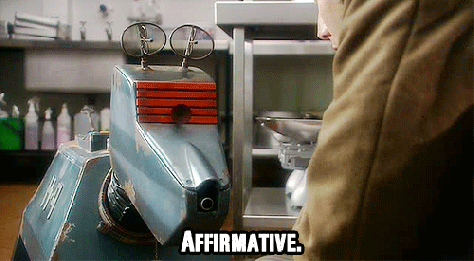
Level 4 - Artificer: At this level, we get our first Ability Score Improvement! However, instead of upgrading our abilities this time, we'll grab a feat. The Telepathic feat from Tasha's Cauldron of Everything will represent the Doctor's limited psychic abilities: we increase one of our non-physical abilities by 1, let's go for Intelligence. We can speak telepathically to any creature within 60 feet, but the creature cannot reply (unless they're telepathic too, of course). Finally, we can touch a Detect Thoughts spell once per long rest, without a need to expend spell slots. Give your target a good headbutt, and learn their surface thoughts.
We also get our final spell: Catapult turns one inanimate object that isn't worn or carried (and weighs from 1 to 5 pounds) and turns it into a remote projectile. The object flies in a straight line for 90 feet before losing its momentum and falling. If it hits a creature, they have to make a Dexterity saving throw or take 3d8 bludgeoning damage. Distract your pursuers with a head of cabbage flying at their heads.
Level 5 - Rogue: We say goodbye to the Artificer, as we move onto Rogue for the rest of the build. Rogues use the same Hit Dice as Artificers, so nothing really changes when it comes to our Hit Points. We already have proficiency with light armour and thieves' tools, but we can pick one class skill – let's pick Acrobatics for better running and parkour chances when escaping aliens and responsibilities.
Rogues start with Expertise, which lets us double our proficiency bonus (NOT ability modifier) for two skills of our choice: let's boost Insight and History, to best utilize our centuries of living. We also learn how to speak Thieves' Cant, a special system of phrases and signals used by other Rogues to communicate without revealing their secrets. Finally, we have Sneak Attack: once per turn we can add 1d6 extra damage if a) we have an advantage on our roll, or b) the target is within 5 feet of another creature hostile towards it. The attack must be done by either a ranged weapon or one with the finesse property (like a dagger or a rapier).
Level 6 - Rogue: We get Cunning Action, which let us turn some Actions we can do in combat into Bonus Actions. That way, we still have an Action to spare if we decide to use Dash, Disengage, or Hide. Considering how much running the Doctor does, it's good to have something else to do just in case.

Level 7 - Rogue: Our Sneak Attack changes to 2d6.
We also get to pick our second subclass, our Roguish Archetype. Now, initially, I considered going Swashbuckler, as it combines nimble footwork and gives us some charm abilities. However, since we're going with the build that emphasizes support and actual combat as a last resort, we'll go with Inquisitive.
We start this subclass with Ear for Deceit, whenever we roll Insight checks to determine if a creature is lying to us, we treat each roll of 7 or lower as 8.
We also get Eye for Detail. This is mostly to be used in combat (or if your DM runs dungeons in Initiative Mode), as it allows us to use Perception or Investigation checks as a bonus action, where it would normally take an action.
Finally, Inquisitive Rogues get Insightful Fighting. As a bonus action, we can make an Insight check, contested by the enemy's Deception check. If we succeed, for 1 minute we can use our Sneak Attack on the target even if we don't have an advantage or the target isn't near another of its enemies.
Level 8 - Rogue: Time for another ASI! Let's raise our Intelligence by 1 point, and use the spare one for Strength.
Level 9 - Rogue: Our Sneak Attack changes to 3d6.
We also get Uncanny Dodge. Whenever we're being hit by an attack, we can use our reaction to halve the damage dealt.
Level 10 - Rogue: Halfway through the build, and we get another shot at Expertise. Once again, we get two skills to which we can double our proficiency bonus. Let's go with Perception and Investigation.
Level 11 - Rogue: Our Sneak Attack becomes 4d6.
We also get one of the better abilities in the game, Evasion. If we're being targeted by an AoE attack that would deal half damage on a successful Dexterity saving throw, we take no damage if we make the save. What that means is, we can now take a Fireball face-on, shrug it off and loudly proclaim

Level 12 - Rogue: We get another ASI. Let's improve our Dexterity by two points this time.
Level 13 - Rogue: Our Sneak Attack becomes 5d6.
We also get another subclass feature. Steady Eye gives us an advantage on Perception or Investigation checks if we move no more than half of our movement speed on our turn.
Level 14 - Rogue: Time for another ASI. Let's focus on getting some more Hit Points this time, and get +2 points to Constitution.
Level 15 - Rogue: Our Sneak Attack becomes 6d6.
At this level, we get Reliable Talent, which upgrades our abilities to almost anime protagonist-level. Whenever we make a check for a skill we're proficient in, we treat all rolls of 9 and lower as 10.
Level 16 - Rogue: We're getting one more ASI. Let's raise our Dexterity again, putting 2 points in it.
Level 17 - Rogue: Our Sneak Attack becomes 7d6.
We get our final subclass upgrade for this build, the Unerring Eye. We can now sense illusions and magical tricks within 30 feet, as well as shapechangers not in their original form. We can detect there is an effect trying to trick our senses around us, but we don't know its nature (i.e. if we meet a creature that activates our sense, we cannot distinguish whether it's a Disguise Self spell, or a natural shapeshifting ability, or a Druid's Wild Shape).
Level 18 - Rogue: We get another one of the best abilities in the game, Blindsense. We can now detect the presence of invisible and hidden creatures within 10 feet radius of us.
Level 19 - Rogue: Our Sneak Attack becomes 8d6.
Our mind becomes more slippery with Slippery Mind. We gain proficiency in Wisdom saving throws.
Level 20 - Rogue: Our build's capstone is Rogue 16, which is also our final ASI. Let's finally cap Intelligence, as it should've been from the start when it comes to Time Lords.
---

There it is. My take on how to play as the Doctor in Dungeons & Dragons. I believe I've covered most if not all of the important features the Doctor has, but let's see:
Let's face it, we're not a frontline fighter... we're not even a backline fighter. We support. With 14 AC (without armour), 151 Hit Points on average, and a +4 to Initiative, our job is to manoeuvre, around the battlefield and let our friends take care of the enemy, while we do other things. With Reliable Talent and Expertise we are great at sweeping the room for clues and hints, even if in the heat of battle. Thanks to Unerring Eye and Blindsense, our senses aren't that easy to fool.
Unfortunately, our Strength is not great, and that means some weapons are just a hindrance (unless we pick a finesse weapon, which replaces Strength with Dexterity). While we have late-game proficiency in Wisdom saving throws, throughout the earlier stages those might prove a little problem.
---
And that is it for this build. I hope that you guys enjoyed it, and I'll see you for the next one!
- Nerdy out!
#d&d 5e#dnd#dungeons and dragons#character building#the doctor#doctor who#new who#classic who#time lord#artificer#battle smith#rogue#inquisitive#revenant
76 notes
·
View notes
Text


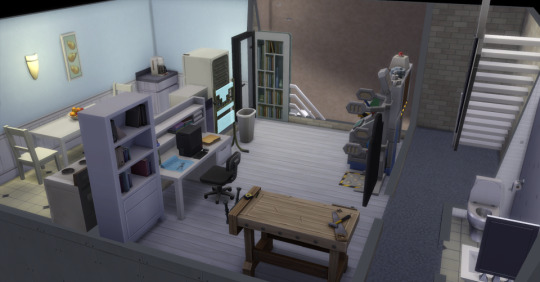
I got the idea to make some kind of a 'solar farm' in TS4... I was curious to see if somelthing like that would work. :) I've finished a rough version of the build (on the 50x40 'Vacuous Green' lot in Del Sol Valley) and still have to thourougly playtest it. For the playtesting part, I've built an underground lair for Alistair Morcubus, with his living quarters behind a hidden door (the bookcase door which is one of the career unlocks).
The ground level is mainly dominated by the solar panels, hidden from view by a hedge. There is a small building on ground level, with an reception area and a stair way to reach the main 'tech' room which is situated downstairs in the first level basement. Alistair's 'secret' living quarters are in the second basement level, accesed by another stairway hidden behind the bookcase door.
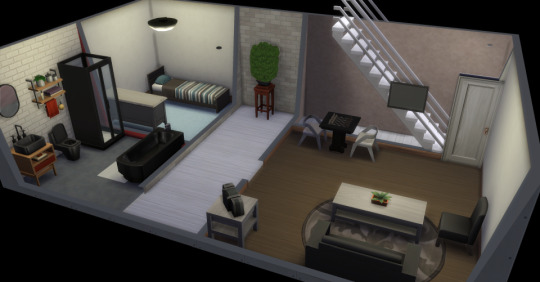
Alistair is going to enroll in an university to study Villainy (with some tech/logic related elective classes), and he will work some odd jobs to earn a little bit of money on the side. He won't start out poor, but we'll have to see how long his starting funds will last (see the questions below ;)).
Some questions to research while playtesting:
how much money can be earned by selling the generated power and does it offset the lot taxes (the lot value is over 200k simoleons! 🙈)?
are the panels routable for maintenance?
how much work/time does it cost to maintain the panels? Can one sim do it alone or does Alistair need a butler and/or 'minions'?
is there a great risk for disasters (fires 🔥) with so many panels?
#ts4#sims4#ts4 gameplay#playtesting#solar farm#alistair morcubus#del sol valley#vacuous green#del sol valley solar farm
6 notes
·
View notes
Text
BioWare Blog Post: Anthem Update – Loot & Equipment Goals
by Christian Dailey, Studio Director, on 7/31/20

Hello Again!
I hope this finds you well and I appreciate everyone’s patience as we work through the right timing for new information. We’re excited to share with you our next blog, but we also want to be respectful of the larger conversations happening in the world.
Recently I started answering questions on Twitter and asked all of you to name some of the changes you would be most interested in hearing about – the response was pretty awesome. Lots of good topics and themes and an excitement to know more about where we are going. So, to kick this off we thought a good starting place would be to go over our high level goals and changes we are exploring with loot and equipment.
Before we get started though, we love that we are able to share the progress and give a peek behind the curtain. That said, the ideas, images and video clip below are works in progress and all subject to change. Remember how the sausage is made…
Satisfying Loot Experience
A good player experience depends on the loot system being extensible and robust, and a lot can go wrong. A lot did go wrong. We fell short here and we realized that building something new from the ground up was going to be required – starting with taking a long look and understanding the best in class of the many great games that inspire us. Based on this research, along with your thoughts and feedback, we planned some high-level goals and changes we wanted to try:
Respect Your Time:
- Increase the frequency of Loot Drops
- Loot is viable more often; All items are better and more competitive, but there’s still a chance of getting something exceptional
- All loot rarities have strategic value throughout progression
Embrace Choice:
- You can pursue specific loot without relying on randomness alone; Quests; Specialized Vendors; Unique Loot Tables
- Modify your loot, including rerolling inscriptions and leveling up items

Create a Rewarding Loot Experience:
- Loot feels exciting and more noticeable when it drops, and is celebrated when collected
- Rare enemies (aka “walking treasure chests”) create exciting moments to get a burst of loot all at once
[short vid of Anthem 2.0 representing the game in development, see source]
Keep it Accessible and Immediate:
- Reveal and equip loot right away
- Complete revamp of the equipment sheet – including a detailed stat sheet (not shown)
- The equipment sheet can be accessed from anywhere, allows you to easily see what you have equipped in each slot

Reliability of Equipment and Rewards:
- Each item has an inscription “budget”, based on its Power and Rarity
- No more useless items because they were missing must-have inscriptions (see “Increased weapon dmg by +225%”)
- Exceptional items are about getting the exact types of bonuses you want, instead of maxing values on every bonus
Scale for the Future:
- Your power cap can be easily increased, and the loot system scales accordingly
- Advanced telemetry data allows us to identify trends and make meaningful balance changes
Aligning around these goals has really helped us focus on the right priorities as we continue iterating and seeing the progress in our internal playtesting. It is early days though and we will continue to test and experiment over the coming months, hopefully with your feedback.
Other Areas of Exploration
In addition to loot and equipment, there are some really good improvements to the feel and types of items we are supporting. Gunplay is overall more responsive with enemies reacting to hits near instantly with improved client-side prediction, we are looking into the role of melee items and builds, and of course, being able to spend skill points to unlock new types of equipment and synergies. One of the things I am most excited about is seeing all the awesome new weaponry concepts based on our factions.

Until Next Time
I hope this helped give some context to the changes we are testing around loot and equipment and what future blogs may dig into. Changes like these are exciting to us and hopefully to you as well, but I want to set expectations that there is a lot of work behind each of these and in some cases a rather large tech undertaking – this is not an “easy fix” and will take time.
Thank you again for your interest, curiosity and passion for Anthem. Please keep engaging online, asking questions and continuing to be part of making the game better.
Stay safe. Be kind to one another. Stronger together.
Christian [x]
8 notes
·
View notes